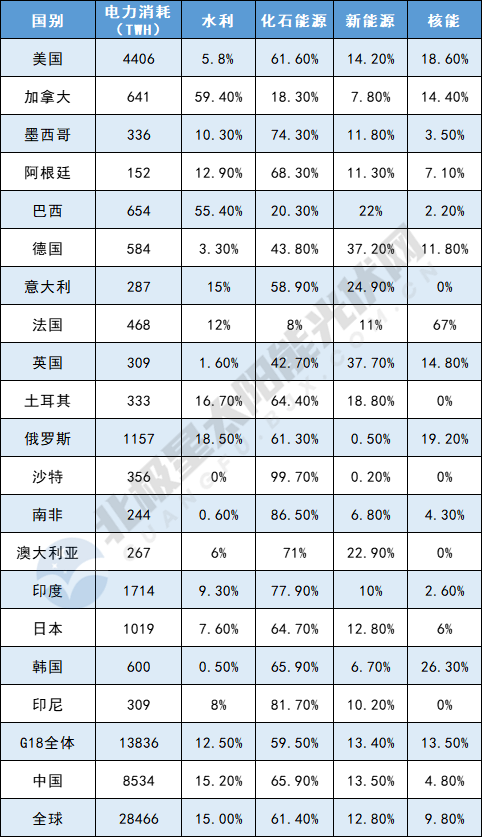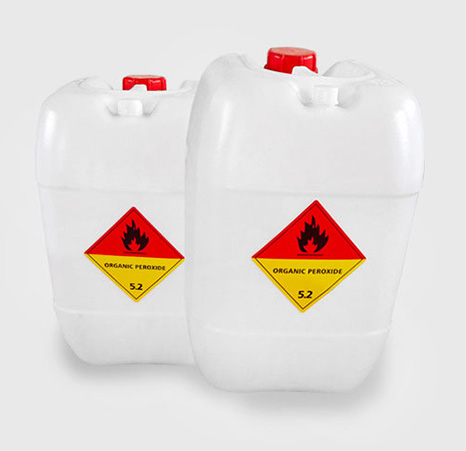The theory of photovoltaic industry sustainability eggs
On May 27, 2018, the 12th SNEC International Solar Photovoltaics and Smart Energy Exhibition opened in Shanghai. Looking back at that time, the pioneers of the photovoltaic industry were rubbing their hands and guiding the world: on one hand, the Nasdaq listed giants were fighting against the European and American anti retro devices in the global market, and on the other hand, the emerging technology giants in China were rubbing their hands and eager to try out for the upcoming single crystal era. Exhibition guests were toasting and exchanging ideas, Boil oil with scorching fire, and flowers adorn the brocade.
However, just a few days later, the National Development and Reform Commission, the Ministry of Finance, and the National Energy Administration jointly issued a notice on matters related to photovoltaic power generation in 2018. This document, later known as the 531 New Deal, poured cold water on the entire industry in an almost cruel one size fits all manner. The old king came to an end, and the new king appeared, and he quickly rose and fell.
A few days after 531 in 2018, the author, who was still quite ignorant, once wrote an article, the main argument being to retain hope even in adversity. As long as the sun is still shining and heating, a better tomorrow for the industry will surely come.
But who could have imagined that at that moment, just like this moment, could be so similar.
Today, the Chinese photovoltaic industry is indeed different from five years ago. Chinese entrepreneurs have almost unified the industry from upstream to downstream: supply chain, equipment, processes, technology, and talent. Apart from some segmented fields, Chinese photovoltaic enterprises have absolute advantages in all aspects. According to data from the Ministry of Industry and Information Technology of the People's Republic of China, the production of polycrystalline silicon, silicon wafers, batteries, and components in China reached 827000 tons, 357GW, 318GW, and 288.7GW in 2022, respectively. The industry's total output value exceeded 1.4 trillion yuan, also exceeding 1% of GDP for the first time (the national GDP in 2022 was 121 trillion yuan).
Today, overseas markets that once belonged to the minefield for Chinese entrepreneurs are no longer mysterious. In Southeast Asia, South America, and the Middle East, photovoltaic factories belonging to Chinese people are gradually put into operation, and the stories presented are no less exciting than the American stories of Cao Dewang and Fuyao Glass. The large production capacity of Chinese companies overseas has surprised Americans to find that it has been a decade since 2013, and in the end, the marketing components in the US market are still familiar Chinese brands.
Today, both Tongwei and Longji are in power. In 2022, the two companies earned over 25 billion and 14.7 billion respectively in net profits (Tongwei's 2022 financial report has not yet been released, and the numbers used are from its performance forecast), which dwarfs many of their peers. What is the concept of this number? Aerospace Science and Technology Group and Aerospace Science and Industry Group are the two giants of China's aerospace industry, with main businesses including strategic nuclear weapons, ballistic missiles, and a series of national heavy weapons. According to the Fortune Global 500 list, the profits of Aerospace Technology and Aerospace Science and Industry Group in 2021 were $3.099 billion and $2.108 billion, respectively, lower than those of Tongwei and Longji. When Dr. Shi Zhengrong called out the slogan of "supporting silicon as the king" back then, he probably never thought that the new king who ascended the throne would have such energy.
However, unlike the booming photovoltaic industry, looking at the global economic environment in recent years is a completely different landscape. The three-year epidemic has caused heavy damage to countless real and non real economies; The Russia Ukraine War, which has lasted for over a year, has kept European energy prices high, further leading to sustained high inflation; The violent interest rate hikes in the United States have caused widespread distress in the financial industry, bankruptcies, fund liquidations, and deeper anxiety among those with money than those without. On one hand, there is the global economic crisis that is almost sinking into the Great Depression, and on the other hand, there is a vigorous expansion and rapid progress of the entire industry; On one hand, undergraduate students from top universities cannot find jobs to deliver food, while on the other hand, top companies are frantically poaching people with high salaries comparable to investment banks; On one hand, companies led by the real estate industry have been thundering, while on the other hand, companies across the industry have repeatedly set new high profits. The brilliance of the photovoltaic industry seems to be in stark contrast to the overall market environment, and this bizarre landscape cannot help but raise the inevitable question for those who still have reason: can all of this really last?
To answer this question, let's first use the first principles to answer another question: What are the products in the photovoltaic industry? The answer is very simple, it's electricity. The ultimate goal of silicon wafers, battery modules, power stations, inverter brackets, etc. is to produce electricity. The demand for electricity is the ultimate demand for photovoltaic, and the supply-demand relationship for electricity is the ultimate supply-demand relationship for photovoltaic. From this perspective, let's delve deeper and predict where the entire industry will go in the future.
Let's first focus on China. According to data from the National Energy Administration, China's annual electricity consumption in 2022 was 8637TWH. Dividing this number by 8760 hours per year yields an average electricity demand of 988GW in China. Considering issues such as peak and valley electricity consumption, grid matching, and backup scheduling, China's actual power generation supply is much higher than this number. According to data from the National Energy Administration, the total capacity of China's power generation equipment in 2022 is approximately 2564GW, which is approximately 3.72 times the average power demand (this multiple, let's call it the installed redundancy ratio, please remember this statement, as it will be mentioned continuously in the future). It can be further divided into five main parts:

In this table, the good news is that the installed capacity of photovoltaic power has historically surpassed that of wind power, ranking first in China's new energy power generation list with an installed capacity of 392GW. The bad news is that out of the 2564GW of installed power in China, 757GW has been consumed by new energy sources, and hydropower, as a zero emission and extremely low-cost power generation method, cannot be replaced by photovoltaic in the short term. In the extreme case, even if China completely abandons thermal power and nuclear power, the extreme demand of the whole market is only about 1300GW. Considering the characteristics of photovoltaic power generation only in the daytime (8760 hours a year, and the area with an average annual light of 2000 hours is considered to be rich in solar resources), and the energy storage is not yet mature in cost, the actual market stock is even smaller, even if we estimate it in the most optimistic situation, According to the data from 2022, the stock market of photovoltaics in the entire Chinese power supply should not exceed 500GW.
After looking at the stock market, let's take a look at the incremental market. In 2022, China's GDP grew by 3% and the overall electricity consumption increased by 3.7%. According to the widely agreed view among economists, the larger the economic base and the higher the degree of industrialization of an economy, the slower its economic growth rate will gradually slow down. We assume that in the future, China can maintain a long-term economic growth rate of 3% and an increase in electricity demand of 3.7%. As mentioned earlier, by assigning a 3.7 times installed redundancy ratio to each watt of electricity demand, we can obtain an incremental market for China's electricity demand, which is approximately 284GW per year. We continue to follow the spirit of absolute optimism, assuming that 1/4 of them use photovoltaic installations (the actual photovoltaic power generation time is less than 1/4 of the whole year), but 71GW. Considering the sluggish overall environment and the shifting trend of the manufacturing industry in recent years, the number of new electricity and installed demand should only be lower.
What an unexpected and frustrating number this is! As the world's largest photovoltaic market, China actually only has a stock demand of 500GW, and once these 500GW are installed, the annual market size can only be maintained at around 60-70GW, even not enough for Tongwei and Longji, two leading enterprises!
Since the domestic market is destined to be a red sea, will the situation be better when we look globally? The author compiled a statistical table of electricity consumption in G20 countries in 2021 based on data from the BP Statistical Review of World Energy 2022 (71st edition, 2022), as follows (to avoid double counting, China and the European Union are not included here, which we refer to as "G18" in the table):

In 2021, G20 countries consumed over 80% of global electricity, with the exception of Russia and Canada, which may not be suitable for photovoltaic power generation due to their high latitude. Other countries are undoubtedly the most important markets for photovoltaic products.
Before we continue our analysis, there is another concept that must be clarified: China, as the world's largest electricity consumer, electricity producer, and the world's largest production and manufacturing base, coupled with its vast size, has the highest demand for power supply safety in the world. China's installed redundancy ratio is as high as 3.7, which is extremely high globally. As a comparison, the United States, as the world's second largest electricity consumer, consumes 4406THW of electricity throughout the year, with an average power demand of 502GW. However, the total installed power generation capacity of the United States is 1143GW, with an installed redundancy ratio of 2.27, which is significantly lower than that of China. In theory, the smaller the country's size, the lower the electricity consumption, and the lower this ratio will be. The data on the actual installed capacity of power generation in various countries is mixed, and the author cannot find very authoritative figures on the internet. Therefore, we roughly assume that the installed redundancy ratio of G20 countries is 2, which means that the average power demand of 1W is equipped with 2W of power generation facilities.
Based on this assumption and applying the previous analysis method of China's electricity demand, the author also calculated the overall power generation installation status of G20 countries outside of China:

Similar to the situation in China, the main stock of the photovoltaic industry in the global market lies in the replacement of fossil energy for power generation installations (nuclear energy may also be one of the energy sources that can be partially replaced by photovoltaic, but the current trend is not yet clear). Compared to China, there are many G20 countries such as Saudi Arabia and Russia that find it difficult to give up fossil energy and invest in new energy in the short term. We still view the future with a very optimistic attitude here. Assuming that one-third of fossil energy generation in G20 countries will be completely replaced by photovoltaic, the overall stock of this major global photovoltaic market should be around 600GW.
In terms of increment, the global performance is slightly weaker than that of China. According to the International Energy Agency (IEA) forecast (Electricity Market Report - July 2022), the global electricity demand growth in 2022 is about 2.4% (the global average electricity growth in the past 10 years is about 3%). Due to lower electricity demand and installed redundancy ratio compared to China, upon careful calculation, the incremental market for global power generation demand is only a small 76GW. We are more optimistic, as half of these incremental demands are provided by photovoltaic technology, which is only an annual increase of 38GW of demand.
Whoa! The so-called overseas market with unlimited scenery is not much more optimistic than the situation in China. Even if we completely ignore the complex tariff barriers of various countries and the already large overseas production capacity (with a conservative estimate of over 50GW), relying solely on the current production capacity of around 350GW of Chinese manufacturers, with full production, in just over three years, we can eat up the entire stock market and then rely on an annual incremental market of less than 150GW to survive.
Looking at this number, I recall more than a decade ago, when I first joined the industry, my first leader was also one of the photovoltaic giants at that time, and the company I was in charge of was also one of the industry leaders for a time. At that time, he often talked about a saying that the fate of the photovoltaic industry was to continuously reduce costs, lower costs, and then lower costs. Only when the day of affordable internet access arrived, could the entire industry truly develop and take off. From the past 10 years, this statement is completely correct. All sectors of the industry have spared no effort to reduce costs, and finally ushered in the day of affordable internet access in 2019. As is generally expected, the decrease in prices has brought about a market explosion, which has created a group of industry leaders with a market value of hundreds of billions. Looking back now, it was indeed an era full of hope and passion: for the production capacity at that time, the market after affordable internet access was almost endless. No matter how much money was spent on new technologies and products, as long as there was a breakthrough in cost, there would be ample market space to reward (the breakthrough in PERC technology is a typical example).
Today, with the gradual clarification of the entire photovoltaic market margin, this set of logic that has been effective for the past 10 years may no longer be as effective. Indeed, products with more advanced technology and lower prices will always be competitive in the market, but due to the limited total market volume, whether various costs such as research and development, equipment, and labor can be recovered through a limited market is a question that every enterprise must consider now. Objectively speaking, before energy storage has a big breakthrough, the scale of photovoltaic market will not usher in the next round of big explosion, while the existing technology is maturing, and the cost of breakthrough is also increasing. It is almost certain that in the not too distant future, some pioneers in the industry will suddenly realize that the cost of updating certain new technologies outweighs their benefits, putting a heavy brake on the industry's arms race.
Unfortunately, at the moment, we still cannot see any signs of this. TOPCon, heterojunctions, granular silicon, perovskite, and other new technologies are still stimulating the nerves of various leaders. Funds from within and outside the industry are rushing in crazily, investing in new technologies and new energy regardless of cost. New friends and old customers in the industry are fantasizing about being able to overtake new technologies in the new era, and fantasizing about breakthroughs in energy storage technology The development of electric vehicles will bring about a significant increase in electricity demand, and the market is large enough to allow oneself to replicate the glory of Tongwei, Longji, and Zhonghuan in the era of single crystal and PERC, and ultimately ascend to the throne. But! It can be said with great certainty that for most people at the card table, the last thing left should be just a litter of chicken feathers.
Fishing with all your might, won't you not get it? And there will be no fish next year.
The current photovoltaic industry holds a fishing net woven with a huge amount of production capacity, capturing every ounce of current market demand, and even capturing every ounce of future market demand. To use a popular online phrase to describe it, we aim to achieve sustainable and dedicated fishing.
This is really a sad and lamentable cycle! Development, expansion, overcapacity, bankruptcy wave, redevelopment, factory expansion, overcapacity, and bankruptcy. This classic cycle of capitalism is so simple and easy to understand yet so difficult to avoid, ultimately becoming a shackle that cannot be undone by the photovoltaic industry and even the entire Chinese entrepreneur. This cycle may be more destructive than in the past. On the one hand, several industry leaders have accumulated a considerable amount of ammunition, and on the other hand, there is a large amount of foreign capital participating in this round of overcapacity. When the tide recedes and everyone struggles to survive, they are afraid that its cruelty will exceed everyone's imagination.
Is there any way we can break out of this cycle? This was originally the original intention of writing this miscellaneous talk, but just a few hours ago, a news report was reported that a company named Sichuan Wuliangye New Energy Investment Co., Ltd. was established. A staff member from the Wuliangye Securities Department revealed that the group is currently investigating the new energy field and is very optimistic about this field



